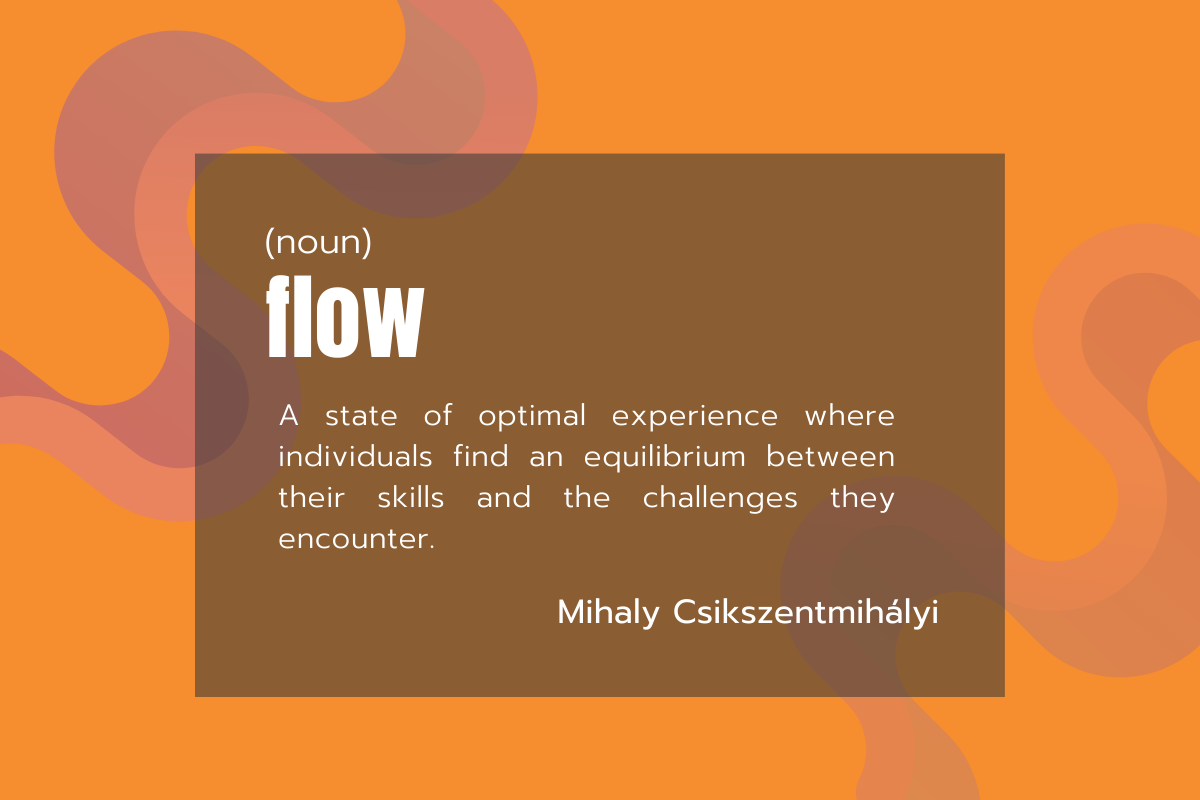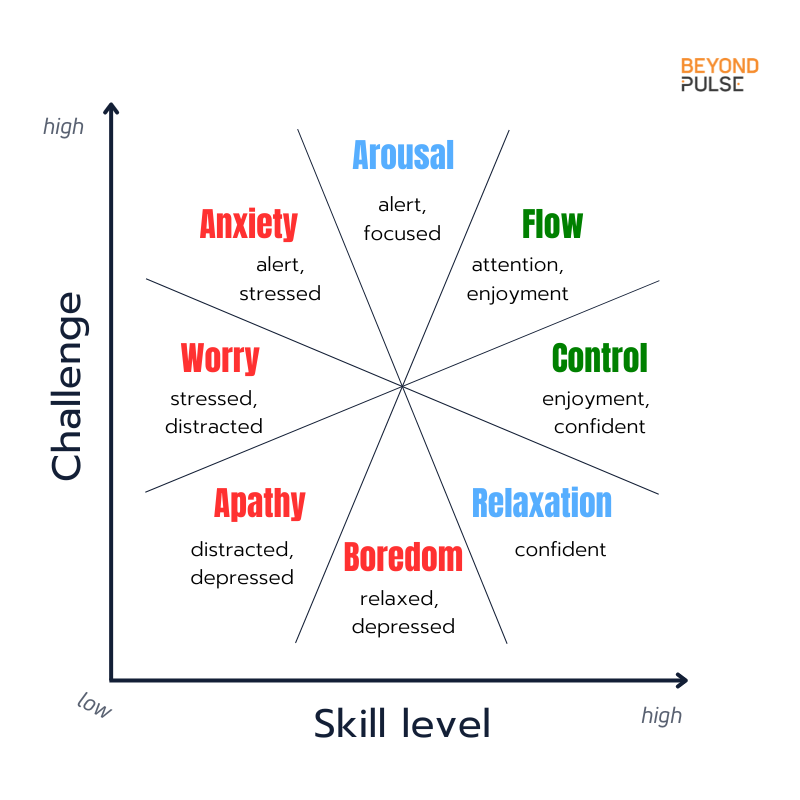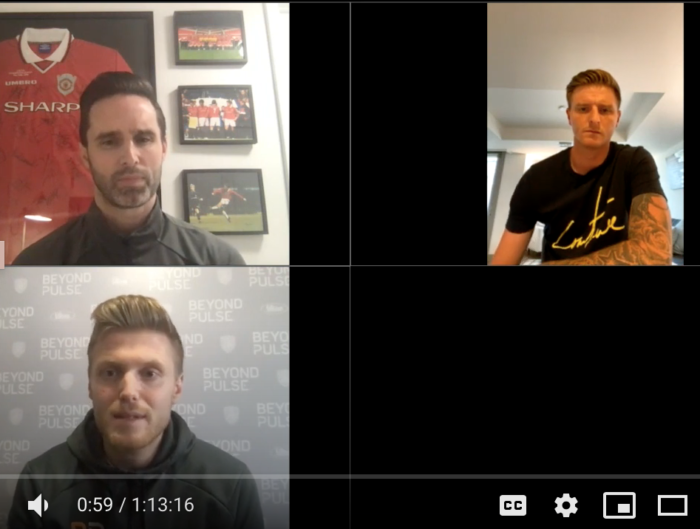Youth sports hold immense potential for young people, offering benefits that extend beyond physical fitness. As coaches, one of our primary objectives is to create learning environments that empower our players to reach their full potential while fostering a deep love for the game. A key aspect of achieving this lies in understanding the delicate balance between challenge and skill, and how it influences a young athlete’s engagement with and enjoyment of the sport.
Enter the Eight Channel Model, a powerful framework that provides coaches and individuals with a blueprint to assess and adjust the level of challenge and skill in various activities or sports. Ultimately, by applying this model, coaches can create environments that promote play, create flow experiences and enhance learning and development in their players.
What is Flow?
Flow is a state of optimal experience where individuals are fully immersed, focused, and deeply engaged with the task at hand. Think of it as being “in the zone” or experiencing a peak performance state.

The concept of flow state was first introduced by Mihaly Csikszentmihalyi, a Hungarian-American psychologist. Csikszentmihalyi conducted extensive research on human happiness and creativity and became interested in understanding optimal experiences. He wanted to explore what makes people truly happy and fulfilled in their activities.
Through his research, Csikszentmihalyi discovered that people reported their most satisfying and enjoyable moments when they were fully immersed in activities that provided a balance between their skills and the challenges they faced. He coined the term “flow” to describe this optimal state of consciousness.
Finding the Right Balance with the Eight Channel Model
Finding the right balance between challenge and skill is indeed crucial for experiencing flow. Striking this balance also presents a compelx challenge for coaches.
Csikszentmihályi, along with other researchers, developed a flow model known as the Eight Channel Model. This model helps illustrate the different states that can arise based on the combination of challenge and skill levels.

The Eight Channel Model presents a matrix with eight different states, each representing a specific combination of high and low levels of challenge and skill.
Let’s take a closer look at the states:
Flow Channel:
This is the optimal state of flow, where the challenge level matches the individual’s skill level. It is characterized by deep concentration, effortless action, and a sense of being fully absorbed in the activity.
Anxiety Channel:
In this state, the challenge level is perceived to be higher than the individual’s skill level. It leads to feelings of stress, worry, and a lack of confidence, hindering the ability to enter flow.
Control Channel:
Here, the challenge level is low, while the individual’s skill level is high. It can result in feelings of control and relaxation, but it may also lead to boredom or a lack of stimulation.
Arousal Channel:
In this state, both challenge and skill levels are high. It can evoke a sense of excitement, but it may also lead to feelings of overwhelm or anxiety if the individual’s skills are not well-developed.
Boredom Channel:
This state occurs when both challenge and skill levels are low. It can lead to feelings of apathy, disengagement, and a lack of motivation.
Worry Channel:
Here, the challenge level is perceived as high, but the individual’s skill level is low. It can result in feelings of inadequacy, self-doubt, and a fear of failure.
Apathy Channel:
In this state, both challenge and skill levels are at a moderate or average level. It can lead to a lack of interest, indifference, and a sense of going through the motions without much engagement.
Relaxation Channel:
This state occurs when both challenge and skill levels are very low. It can evoke a sense of calmness and tranquility, but it may also lead to a lack of motivation or a sense of stagnation.
Applying the framework
The Eight Channel Model is not only a solid guide, it also serves as a powerful tool to open up communication and facilitate the development of athletes. By understanding the various states depicted in the model, coaches can engage in meaningful conversations with their athletes, helping them navigate challenges and optimize their performance.
Each state in the model represents a different combination of challenge and skill levels, highlighting the dynamic nature of an athlete’s experience. Coaches can use this framework to assess where their athletes are positioned and identify areas for growth and improvement. For instance:
- If an athlete finds themselves in the Arousal state—feeling involved but lacking a sense of control—coaches can have conversations about building new mental skills to help the player stay calm, centered, and in control of their emotions, enabling them to perform at their best despite the intensity of the arousal channel.
- If an athlete is in the Worry state—feeling self-doubt and lacking confidence—coaches can discuss implementing targeted skill-building exercises and practice scenarios to help the player develop the necessary skills and build more confidence.
By openly discussing these eight states and their implications, coaches can create a supportive environment where athletes feel understood and empowered. This communication fosters a collaborative relationship between coach and athlete, enabling the coach to provide targeted guidance and support tailored to the individual’s needs.
The model also encourages athletes to reflect on their own experiences and self-assess their position within the flow states. It promotes self-awareness and helps athletes recognize when they are in a state of flow or when adjustments need to be made.
Youth Coaches can use the Eight Channel Model to:
- Assess skill-challenge balance
- Facilitate flow experiences
- Individualize training
- Open up Coach-Athlete communication
- Promote skill development
- Enhance motivation & engagement
- Encouraging self-reflection
The Eight Channel Model: your flow guide
While achieving a flow state is highly beneficial for learning and forming positive connections with the task at hand, being in a flow state is not a constant requirement. Flow is an optimal state characterized by deep engagement, focus, and effortless action, but it may not be sustainable or necessary in every moment of our lives. There are times when we can still make progress, learn, and enjoy ourselves without being fully immersed in flow.
Embracing a balanced approach allows for flexibility and the exploration of different states of mind, fostering diverse experiences and personal growth. It’s about recognizing the value of flow while also appreciating the richness of other states and finding the right balance for each situation.
Overall, the Eight Channel Model goes beyond being a simple guide; it serves as a platform for open communication, self-reflection, and mutual understanding between coaches and athletes. By utilizing this model, coaches can guide their players towards enhanced development, personal growth, and a deeper connection to the sport.
Learn more about the science behind Flow States:

 FRA
FRA































